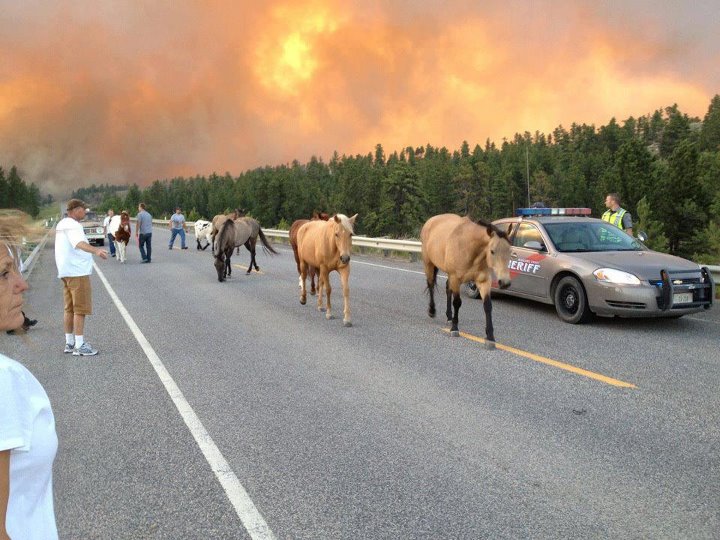14 January 2013


Experts seem like they are always giving dire warnings of the consequences of not having a disaster plan. The wildfires in
Tasmania this week are a horrific reminder to horse owners that we have a moral, legal and ethical responsibility to our animals, to our families, and to our communities. We must ensure that we have made better arrangements than to wait until the last minute to react when disasters threaten. Worse – recent studies show that despite years of those ominous warnings and efforts to educate – that many people do not even have the basics of a disaster plan for their families, much less their pets and their horses. We don’t want to let that person be you – so a few simple ideas for making your plan work are below and in the next portion of this blog.
You should not even consider working on any plan for dealing with your horse(s) until you get this first part right. Your family is most important, and if they are made part of the planning preparation process this will make them more resilient and capable if a real emergency occurs.
How Ready Are You?
Take an inventory of your personal situation while you are sitting there at the computer. See if you can answer these questions to test your personal preparedness.
SCORING: Give yourself ONE point for each completed area, and HALF point for each that is partially complete. ZERO points if you have no preparation in this area.
How did you do? If you were able to check off six points (of the possible ten above) then you are already better prepared than your neighbors, and are well on your way to having a great disaster plan. It is the rare family that can get all ten points in the above areas – but it gives you a goal. Once you can get at least eight points – you are ready to move on to preparing your horses and your barn/stable.
Do you have items and suggestions to add to this list? Have you made specialty preparations for your family that you are willing to share with others? Please contribute them here. Next week we will move on to a disaster plan for your barn or stable (whether you board your horse or keep them at home.)
Resources:
A more expansive list of items to go into your disaster kit is outlined at http://www.disastercenter.com/guide/kit.html
FEMA has a suite of tools to work on your preparedness plan with recommended lists at http://www.ready.gov/make-a-plan.
There are excellent ideas for getting your family to work together on a disaster plan at https://millionmilesecrets.com/guides/last-minute-evacuations/